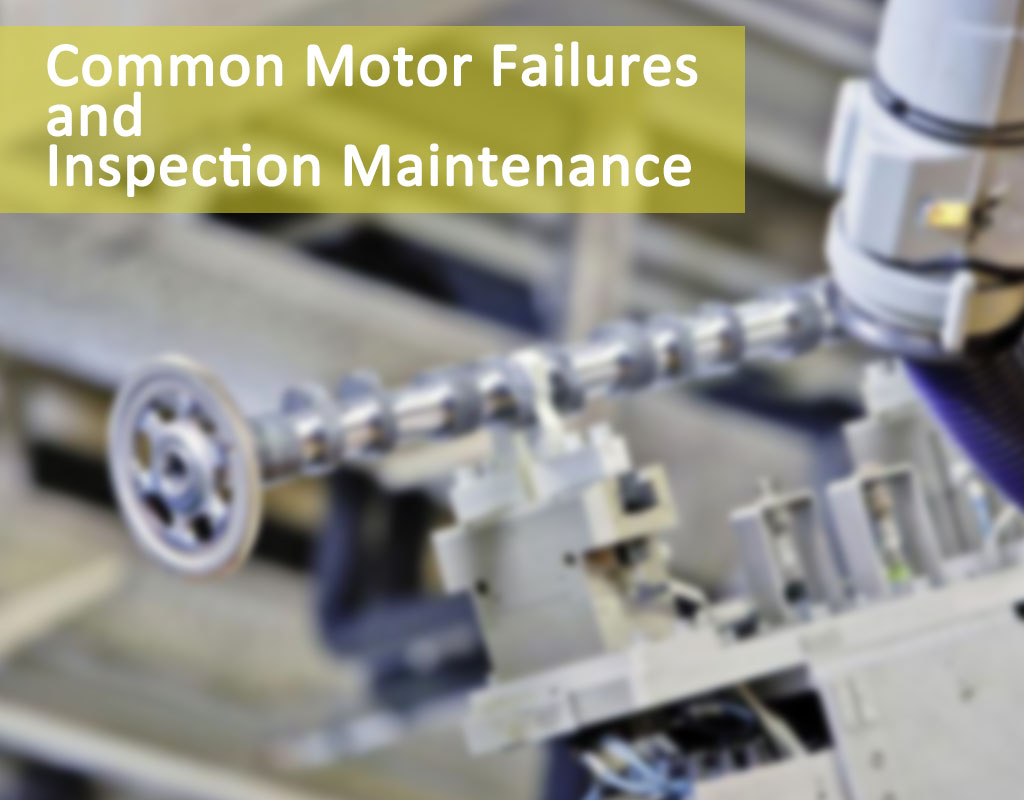Common Motor Failures and Inspection Maintenance

Common Motor Failures
1.Abnormal startup or abnormal speed after startup
1)Stator circuit (power supply, switch, contactor, leads, windings) missing phase.
2)Rotor cage breakage (ring breakage, bar breakage).
3)Rotor rubbing against stator, or mechanical drag causing jamming.
4)Incorrect stator circuit wiring (winding polarity or star/delta configuration).
5)Low power supply voltage.
2.Overheating or smoking
1)Power aspect High or low voltage, or phase loss.
2)Motor itself Stator winding inter-turn or turn-to-turn short circuit or ground, rotor bar breakage or stator/rotor rubbing.
3)Load aspect Mechanical overload or jamming.
4)Ventilation and heat dissipation aspect High ambient temperature, excessive dirt on casing, blocked air ducts, damaged or improperly installed fan.
3.Bearing operating temperature is too high
1)High bearing running temperature Bearing running temperature should generally not exceed 95°C.
2)Improper, deteriorated, excessive, or inadequate lubricating oil.
3)Bearing wear, rust, spalling, inner or outer race running, or improper assembly of inner and outer covers.
4)Misalignment of couplings or over-tightened belts.
4.Abnormal noise or strong vibration
1)Stator-rotor rubbing or severe wear deformation of driven machinery.
2)Uneven foundation, weak base, or loose anchor bolts.
3)Coupling misalignment or bent shaft.
4)Rotor eccentricity, rotor imbalance, unbalanced driven machinery, or bearing eccentricity.
5)Oil shortage or damage to bearings.
6)Rotor bar breakage.
7)Phase loss or overloaded operation.
Motor Inspection
1.Pre-operation inspection
1)Check if the casing is clean, inspect for dust and dirt inside open motors.
2)Disconnect cables and terminal boards, measure winding resistance and insulation to ground.
3)Verify correct stator winding connection and power supply voltage as per nameplate.
4)Manually rotate motor rotor and drive system, check for obstructions and bearing lubrication.
5)Ensure ventilation system is unobstructed, and all fasteners are secure.
6)Check grounding of motor.
2.Operational inspection
1)During normal operation, current and voltage should not exceed rated values. Phase current imbalance should not exceed 10%, phase voltage imbalance should not exceed 5%, and allowable voltage fluctuation is within -5% to +5% of rated voltage, not to exceed 10%.
2)Ensure temperature measurement devices are working, temperature rise within specified range.
3)Normal sound and vibration, no abnormal odors.
4)Proper bearing lubrication, flexible rotation of oil ring.
5)Cooling system in good condition.
6)Clean surroundings without debris, leaks of water, oil, or air.
7)Protective covers, terminal boxes, grounding wires, control boxes intact.
Motor Maintenance
1)Keep motor surroundings clean and free of debris.
2)Regular inspection, address anomalies, record defects.
3)Prevent water or steam leaks around, avoiding motor dampness affecting insulation.
4)Regularly change lubricating oil, typically every 1000 hours for plain bearings, and 500 hours for roller bearings.
5)Periodically inspect insulation of standby motors, address non-compliance promptly.
Copyright 2025 @ Xiamen Wusu Network Technology Co., Ltd. .All Rights Reserved.Sitemap | Blog | XML | Privacy Policy
 Network Supported
Network Supported